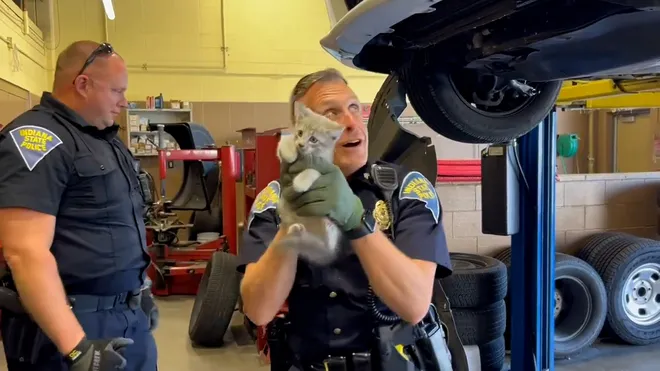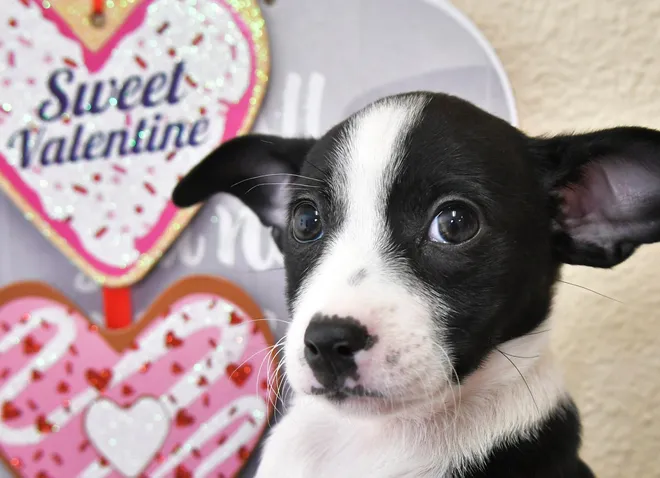Spring brings puppy and kitten litters. So make sure to keep them away from toxic plants.
As people mark the first days of spring by planting flowers and other greenery, veterinarians say it's critical to prevent our furry friends from eating toxic buds and leaves this time of year.
Hundreds of plants are considered toxic to cats and dogs, causing severe vomiting, diarrhea or death without proper veterinary treatment.
In recent years, lilies ranked as one of the toxins leading to the most cases of cat poisonings, according to Pet Poison Helpline, an animal poison control center. Azaleas, sago palms and oleanders ranked high for dog poisonings. Mildly toxic plants include pothos, known as devil's ivy, and tulips.
Even if a plant is non-toxic to cats and dogs, like grass and ferns, an animal may still face gastrointestinal trouble and vomit after eating it.
It's especially important to keep puppies and kittens − who are far more mouthy and curious − away from toxic plants, said David Dorman, a professor of veterinary toxicology at North Carolina State University in Raleigh.
"They're going to make mistakes, and keep in mind a lot of those things are because the animal is young and it's just trying to figure out the world," he said.
Prevention is key, Dorman told USA TODAY, and safe plant management is "a lot like baby proofing your home," he said.
Even with preparation, unexpected accidents happen, Dorman said, so it's important to be ready if an emergency situation involving a toxic plant does occur.

What plants are toxic for cats and dogs?
The only way to fully ensure your cats and dogs are safe from toxic plants inside your home is to not have toxic plants in the first place, Dorman said.
If you have a dog, keeping plants on counters and shelves that your pet can't reach is recommended. Cats, however, can jump more than 6 feet in the air − meaning most household surfaces are in their reach, Dorman said.
American Society for the Prevention of Cruelty to Animals has a comprehensive and searchable list of hundreds of plants that are toxic to cats, dogs and other pets. According to Dorman and the Pet Poison Helpline, here are a few:
- Easter lilies
- Lily of the valley
- Rhododendron
- Hydrangea
- Daffodils
- Aloe

Spring's Easter candies, fertilizer are also toxic for pets
Baskets full of Easter candy and freshly planted gardens make spring delightful − but they also mean this season is one of the most dangerous for cats and dogs.
Dorman said veterinarians in his area see a spike in chocolate poisoning among dogs each year around Easter, as well as every October around Halloween. They also see an increase in cases of dogs getting into fertilizer, he said.
If you want to avoid toxic fertilizers and insecticides, skip those with organophosphates, a toxic group of chemicals that can kill large dogs in even small doses, according to the Merck Veterinary Manual.

What do I do if my cat or dog eats a plant?
If you suspect your pet has eaten a toxic plant, call your local veterinarian, even if the animal is not showing signs of a medical problem, Dorman said.
Cats and dogs may show the following signs if they ate a toxic plant, according to Pet Poison Helpline:
- Vomiting
- Drowsiness
- Impaired balance or coordination
- Diarrhea
- Being agitated or irritable
- Drooling
Pet owners can prepare for possible emergencies now by putting an emergency veterinarian's phone number on their refrigerator, as well as numbers of animal poison control hotlines: ASPCA Animal Poison Control Center can be reached at (888) 426-4435 and Pet Poison Helpline at 800-213-6680.
Disclaimer: The copyright of this article belongs to the original author. Reposting this article is solely for the purpose of information dissemination and does not constitute any investment advice. If there is any infringement, please contact us immediately. We will make corrections or deletions as necessary. Thank you.







